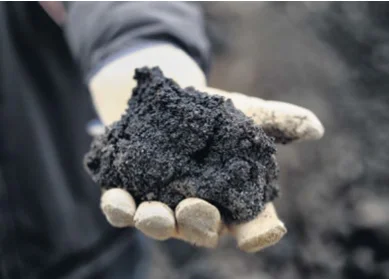Making cities more resilient by integrating flexible, local fuel sources
District energy systems have been implemented, for example, in Oujé-Bougoumou, Quebec (top right), and Strathcona County, Alberta (bottom right). Their infrastructure is expensive to build, but if prices of high-grade energy sources – such as electricity, natural gas or oil – were to spike unexpectedly, these systems would allow central energy plants to switch fuel sources to renewables with much less overhead and still deliver reliable services, according to Ms. Richardson and her team members Terri Chu and Marlene Rogowska. FVB ENERGY
Small-scale projects that produce energy and use it more efficiently at the community level are critical to securing Canada’s energy future, experts say.
With energy use by cities accounting for more than two-thirds of global demand, local urban solutions are instrumental to curbing energy consumption and the resulting environmental consequences, says independent consultant Mary Ellen Richardson.
“If Canada is to become a sustainable energy superpower, Canadian cities will need to be as focused on resource stewardship and efficient management as they are on resource extraction and transport,” says Ms. Richardson, whose career in the oil, natural gas and electricity industries spans 30 years. “We have to rethink how we develop our urban spaces and take advantage of the energy we have there.”
Energy use by cities accounted for 67 per cent of global demand in 2006, a figure that is expected to increase to 73 per cent by 2030, according to the International Energy Agency.
Ms. Richardson notes that cities in northern Europe, which have similar climates to ours, have built “district energy” systems, with small-scale “combined heat and power” facilities that produce thermal and electrical energy for local use or to sell to the electrical grid. Few communities in Canada are exploiting such opportunities to turn natural gas or local fuel feedstocks such as wood biomass, solid waste and biogas into energy, she laments. “Literally, we waste our waste.”
Many Canadian provinces focus their energy policies on distant, large-scale electricity plants rather than community energy systems, she says, adding that a bigger focus on efficiently meeting the heating and cooling energy needs of cities is critical.
Michael Harcourt, the former mayor of Vancouver and premier of British Columbia, who has served on a number of organizations dealing with urban sustainability, says that communities must make energy an integral part of their strategies.
“We have to change the way we live,” says Mr. Harcourt, chair of Quality Urban Energy Systems for Tomorrow, a collaborative network focused on urban integrated energy initiatives.
He points out that Guelph, Ontario, has a 25-year community energy initiative that requires it to reduce greenhouse gas emissions by 60 per cent and per-capita energy consumption by 50 per cent. “That means making the right choices.”
For example, water storage, treatment and delivery accounts for 17 per cent of a municipal government’s energy bill, he says. People could significantly reduce their water consumption if the “grey” water resulting from washing and showering were recirculated in their homes for other purposes.
“We can dramatically reduce costs and reduce consumption and create livable, sustainable solutions,” Mr. Harcourt says.
Ms. Richardson acknowledges that the capital costs of the infrastructure needed to pipe thermal energy throughout a community would be significant, but it really is no different than installing sewers, water systems and other critical infrastructure needed to meet basic needs.
Vision is critical, as “conventional land-use planning approaches tackle energy at the end of the planning process, with energy considerations presently appearing secondary to building or community design,” she says. “This approach misses the opportunity for increased efficiencies, the use of local energy fuels and the application of other energy stewardship concepts.”
A “reactive” approach locks communities into long-term, less-adaptable energy scenarios, Ms. Richardson says, while one based on flexible, local fuel sources is less vulnerable to supply interruptions from severe weather and grid failures, and it helps communities focus on energy conservation.
“Cities are at the crux of the climate challenge,” she says, although “this scale of a problem requires multi-government cooperation and intervention of city planners working in tandem with the community, technical experts and policy-makers.”
Visit the host publication or see more related articles below:










